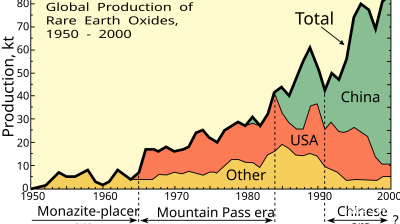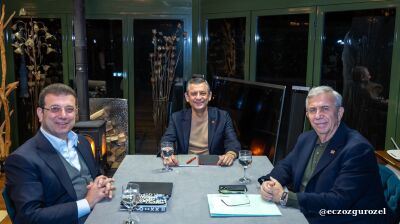Russia and China want to de-dollarise their economies and have already gone a long way to switching setting their mutual trade in national currencies. But the BRICS members have called for a new “BRICS currency” to be introduced similar to the euro to challenge the US dollar’s hegemony. How realistic an idea is that?
As bne IntelliNews reported, a new BRICS bloc is emerging leading by the biggest emerging markets of Brazil, Russia, India, China and South Africa representing the emerging African continent. Increasingly powerful and boasting large economies that are developing quickly, these countries are gathering together the other emerging markets into a bloc to better represent their interests in a world that has long been dominated by the West. One of the whips of Western control, as they see it, is the predominance of the dollar in the international financial system.
Russia and China have already made a lot of progress in switching from the dollar to their own national currencies in the settlement of their mutual trade.
The total trade turnover of the two countries is set to hit $200bn this year and Russian President Vladimir Putin claimed earlier this year that over 70% of contracts are settled in local currencies of yuan and rubles.
Since the start of the war in Ukraine there has been a noticeable yuanisation of the Russian financial system where the share of yuan in Russia’s international reserves has dramatically increased and the Central Bank of Russia (CBR) is using yuan for its international exchange operations, where it once used dollars.
And de-dollarisation has begun. While dollars are unchanged in settling international trade deals, accounting for about 85% of the total, the dollar’s share has fallen in countries’ international reserves. The dollar use remains head and shoulders above everything else, but many emerging markets are as unsettled as Russia by the US decision to weaponise the dollar in its showdown with the East and are now actively beginning the long slow process of diversifying their reserves.
However, the big drawback with switching to the yuan is that it is not freely convertible like the dollar. In effect, the CBR has to ask Beijing for permission to do any large transaction. China insists on staying in control of how other countries use its money.
Ridiculous idea
Jim O’Neill, who coined the term BRIC, has already poured scorn on the idea as “ridiculous.” Ahead of the group’s 15th summit on August 24, O’Neill told the Financial Times that the notion that the group of various disparate emerging nations have enough in common to create a common currency cannot be made to work. The BRICS have “never achieved anything since they first started meeting”, eight years after he created the phrase in a 2001 research note, O’Neill said.
Commenting on previous predictions that the yen, euro or renminbi would eventually surpass the dollar, O’Neill said: “None of these things will ever happen until those countries want to have their currencies used by people in other parts of the world.”
Originally invested as a marketing term to sell equities, the criteria to count as a BRIC were very simple: an emerging market with a large population, a large GDP and fast growth. According to O’Neill, South Africa, which joined the grouping in 2010 to create the “BRICS” from his “BRIC”, should be excluded from the group as its economy is not large enough, unless it is considered a proxy for all of Africa.
“It’s just ridiculous,” he said in response to calls for a “trading currency” from Brazilian President Luiz Inácio Lula da Silva, who has been actively advocating the idea of a common currency, and other politicians from the bloc. “They’re going to create a BRICS central bank? How would you do that? It’s embarrassing, almost.”
A BRICS bank has been set up, which changed its name to the New Development Bank (NDB) to de-emphasise its BRICS origin, and it is more of a non-Western development, similar to the International Monetary Fund (IMF) than a central bank. Moreover, NDB's vice president Anil Kishora told bne IntelliNews in an exclusive interview that the bank was simply born from the leading EMs' desire to have a development bank that caters directly to their needs and is under their own control and said that NDB has no aspirations to play the same role as the IMF in husbanding the birth of a new fiat currency system which had the dollar at its core.
With dozens of countries formally or informally expressing interest in joining the bloc, this year’s BRICS summit could be its biggest leap forward in membership since South Africa joined in 2010. But the agenda will be dominated by simple issues like criteria for admission to a BRICS+ that China and Russia are keen to build, and have not only not been decided, but it is already clear that views amongst the existing BRICS members are highly divided. The issue of creating “bricso” currency is not even on the agenda.
“It’s a good job for the West that China and India never agree on anything, because if they did the dominance of the dollar would be a lot more vulnerable,” said O’Neill wryly.
China’s yuan is a controlled currency, but still has been exchanged relatively freely as more and more trade is being settled in yuan. The same is not true for India’s rupee, which is only partially convertible. The problem is that India doesn’t produce enough goods that other countries want to buy, so there is little motive to build up reserves of rupees. As a result, the exchange of rupees have pass through an intermediate conversion stage which demands they are converted into dollars before being exchanged for anything else.
Russia’s trade has boomed in the last year and half thanks to ballooning oil exports to Indian refineries, but the Kremlin is amassing a huge pile of rupees in payment that it is struggling to convert into a more liquid currency.
Latin America
Lula has been one of the most active advocates of a new common currency and as Brazil becomes the trading superpower of South America after its current account soared in recent years, he has been actively lobbying for a common South American currency similar to the euro to boost trade on his continent.
The heads of state from 12 South American countries gathered in the Brazilian capital to discuss regional integration and an attempt to revive the “Unasur bloc”, including the creation of a common currency.
"If God wills, we will create a common currency for Latin America, because we shouldn't be dependent on the dollar," Lula said while on a state visit to China where he met with fellow BRICS leader Chinese President Xi Jinping.
Unasur is a consensus mechanism comprising Argentina, Bolivia, Brazil, Chile, Colombia, Ecuador, Guyana, Paraguay, Peru, Surinam, Uruguay and Venezuela. It was established in Brasilia, on May 23, 2008, upon the signature of the Union of South American Nations Constitutive Treaty.
The argument is that a common Latin American currency would promote inter-regional trade, reduce costs, increase macroeconomic stability, deepen the local debt markets and give the continent better bargaining power in its international deals.
The idea is not new. An original proponent is the Brazilian Fernando Haddad, former mayor of Sao Paulo and ex-presidential candidate of the left-wing Workers' Party (PT), who lost the 2018 ballot to current incumbent Jair Bolsonaro. And Lula, himself a former World Bank economist, has embraced the idea wholeheartedly. Haddad brought up the idea again in a recent op-ed and also suggested calling it sur, or “south” in Spanish.
The countries of Latin America are a lot more homogenous than those of the BRICS, but even their historical rivalries, as well cultural, economic and political differences are seen by experts as major hurdles to creating a single currency. For example, today the Unasur bloc is inactive and paralysed as national bureaucracies have been unwilling or unable to give up sovereignty and protectionist policies that have clashed with national interests, although the treaties remain in force.
Political union will be hard…
Another way of creating a BRICS currency would be to create something similar to the IMF's Special Drawing Rights (SDRs), which has been advocated by figures like Putin and his Foreign Minister Sergei Lavrov, but analysts are sceptical about this idea as well.
“Getting India on board with China would be difficult. And if the goal is to push back against the hegemony of the dollar, a new shared currency would offer no advantages over existing national currencies, which themselves are making only limited headway,” says Mark Williams, chief Asia economist at Capital Economics, and his colleague Shilan Shah, the deputy chief emerging markets economist.
The notion of a new BRICS currency has been discussed as a potential solution. However, there are varying interpretations of what this currency would entail. At one extreme, it could involve creating a monetary union among the BRICS nations, analogous to the euro-zone, which would be fraught with economic and political barriers and is unlikely to happen. The EU has at its core the principles of the free flow of labour, goods and capital, but the BRICS countries are too far apart and their labour markets too different for this to make sense. As for the free flow of capital, Russia, India and China all have capital controls that they are not going to give up.
South America’s tentative steps towards some sort of union have already demonstrated the difficulties of this idea. The economics of such a union don’t work either, says Capital Economics.
… and economic mismatches make it harder
“Leaving aside the political barriers, the economics don’t work. The one factor in favour is that the business cycles of China and the other economies – other than India – are at times roughly in sync, thanks to the link provided by China’s commodity demand. As a result, tightening and loosening phases by their central banks often coincide. But the other economies are subject to far bigger swings in inflation than China. A cursory glance at policy rates shows that the appropriate monetary policy stance usually differs massively too. And over the past year there has been no synchronisation at all, with the People’s Bank loosening against a backdrop of tightening elsewhere,” say Williams and Shah.
A more feasible option would involve establishing a "BRICS currency" reserve asset, similar to the IMF’s SDRs. This would entail issuing assets to each country's central bank, constituting claims on other participating central banks. The value of these assets would be tied to a basket of domestic currencies and could potentially be used for trade settlements and as a reserve alongside existing national currencies.
Another problem is that the trade within the BRICS bloc is not balanced. India and South Africa have each run persistent deficits with their BRICS partners since the turn of the century, while Brazilian exports are currently booming to an extraordinary extent, according to Institute of International Finance (IIF). Russia also runs substantial trade surpluses based on its raw material exports. Only China is careful to maintain relatively balanced trade relations with its partners.
But even this relatively simple scheme will be political agreement amongst all the players, and India in particular is going to be a problem. Given the strained diplomatic relations between India and China, it is uncertain whether these two major economies could collaborate effectively on such an initiative. India's contentious land border with China and ongoing tensions continue to get in the way.
Creating a new BRICS currency reserve could provide some benefits, particularly for Russia, which has faced restricted access to a portion of its foreign exchange reserves due to sanctions; however, the other BRICS economies already possess substantial reserves, says Capital Economics.
The bottom line is that trading using dollars is simply easier and cheaper. The lack of a liquid market for the proposed BRICS currency and the absence of a domestic issuer is going to hold back any new currency.
“In sum, a BRICS currency wouldn’t solve any of the problems that make moving away from the dollar hard, and in some ways would make those problems worse. Existing domestic markets in real, rupee, ruble, rand or renminbi assets makes these more plausible alternatives for settling trade. And currency swaps between BRICS central banks are a simpler means to the end of boosting access to deployable reserves. Even the [yuan], though, the most plausible of the (“R5”) currencies to operate as a vehicle for intra-BRIC trade, will fail, we think, to become a meaningful challenger to the dollar,” say Williams and Shah.
Features

US denies negotiating with China over Taiwan, as Beijing presses for reunification
Marco Rubio, the US Secretary of State, told reporters that the administration of Donald Trump is not contemplating any agreement that would compromise Taiwan’s status.

Asian economies weigh their options amid fears of over-reliance on Chinese rare-earths
Just how control over these critical minerals plays out will be a long fought battle lasting decades, and one that will increasingly define Asia’s industrial future.

BEYOND THE BOSPORUS: Espionage claims thrown at Imamoglu mean relief at dismissal of CHP court case is short-lived
Wife of Erdogan opponent mocks regime, saying it is also alleged that her husband “set Rome on fire”. Demands investigation.

Turkmenistan’s TAPI gas pipeline takes off
Turkmenistan's 1,800km TAPI gas pipeline breaks ground after 30 years with first 14km completed into Afghanistan, aiming to deliver 33bcm annually to Pakistan and India by 2027 despite geopolitical hurdles.




